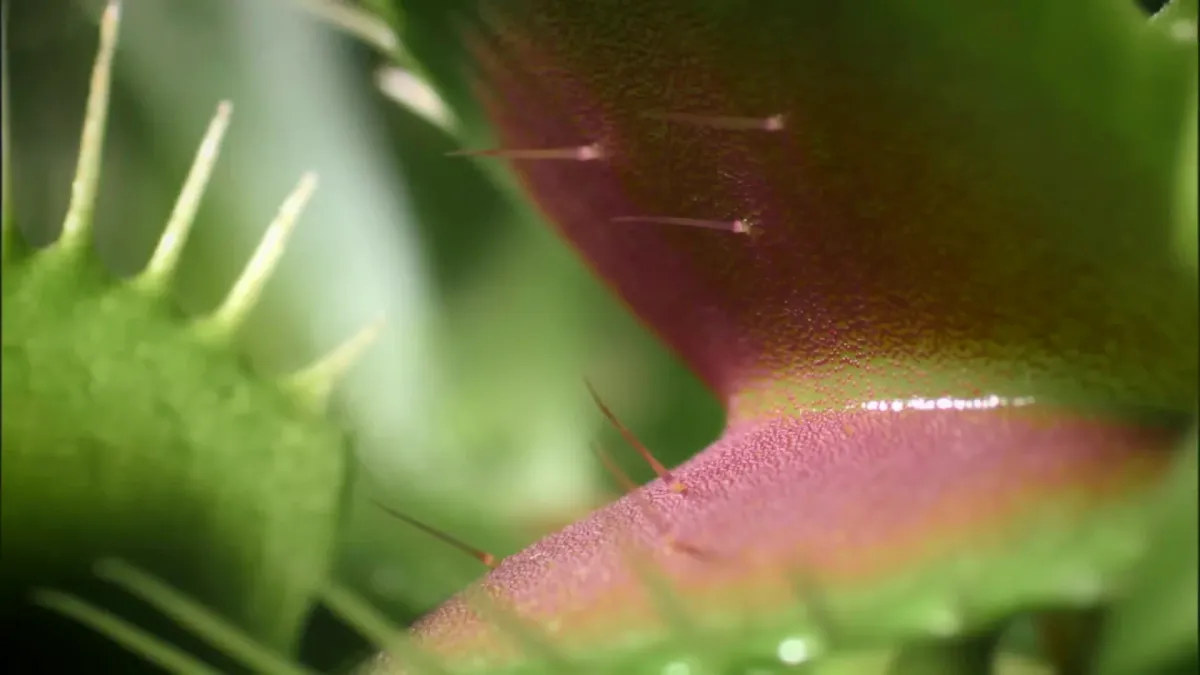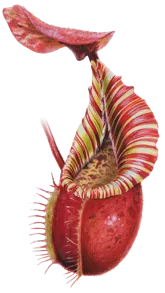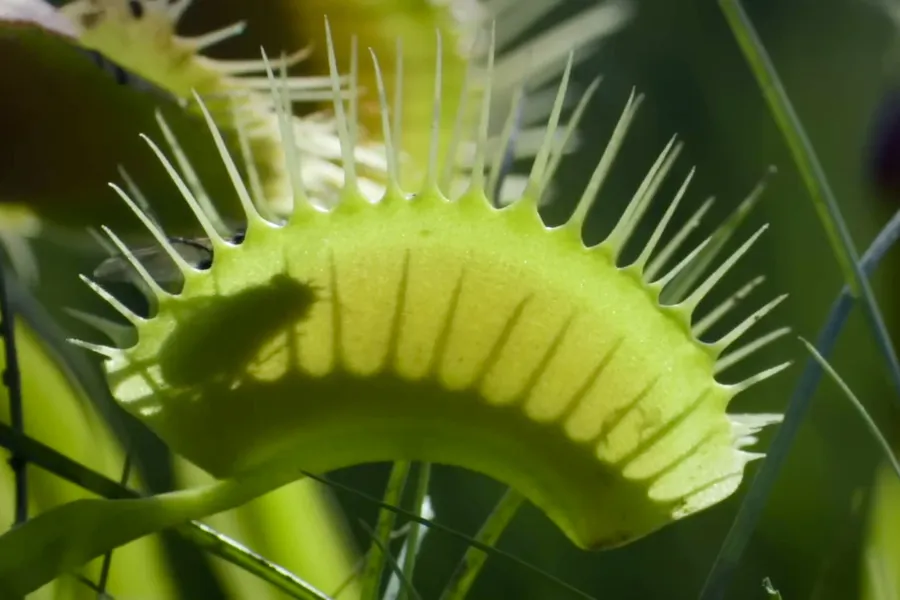Charles Darwin once described the Venus Flytrap as “one of the most wonderful plants in the world.” For many people, that first experience of seeing a healthy trap snap shut on an insect also raises a wellspring of questions. The first of these is often how do Venus flytraps work?
The short answer…
Venus flytraps are carnivorous plants, which means they lure, trap, and digest insects to obtain nutrients which are lacking in their natural habitat. They do this with a snap-trap mechanism; their uniquely adapted leaves are dotted with ‘trigger hairs’ that detect the movement of insects. When two hairs are touched in the space of about 20 seconds, an electrical stimulus causes the trap to snap shut, as you can see in this video:
The edge of each lobe is lined with ‘teeth’, which interlock to form a cage when the trap closes. If the hairs were triggered by a false alarm, or an insect small enough to escape, the trap will slowly reopen within about 12 hours. But if the trapped insect continues to struggle, the trap will continue to close until it is completely sealed.
This sealed trap effectively becomes the plant’s stomach, and the insect is broken down by the plant’s own digestive enzymes. The resulting nutritious soup is absorbed by the trap, which eventually reopens after about 10 days. Only the husk of the digested insect is left behind - bait for the next victim.
What makes the Venus Flytrap extraordinary 🌱
Sometimes a short, factual description (like the one I’ve given above) can gloss over things which are truly incredible, and worth stopping to think about. So here are 3 facts about the Venus Flytrap’s inner workings which - I think - make it one of the most amazing plants in the world.
1. Venus Flytraps have evolved to count
The Venus Flytrap requires not one but two trigger hairs to be touched in the space of about 20 seconds before closing. If only one hair is touched, or the touches occur minutes apart, the plant doesn’t move. This evolutionary adaptation reduces the likelihood that the plant will waste its energy closing on non-prey items.
This kind of counting behaviour - known as ‘plant arithmetic’ - is extremely rare. It doesn’t fit with our mental model of plants as slow, passive lifeforms. I find it more reminiscent of a predatory animal than a houseplant. Perhaps that’s one reason why growers of carnivorous plants become so attached to their plants, almost as if they were pets.

2. Venus Flytraps are faster than the blink of an eye
If you’ve only ever seen limp, sickly Venus Flytraps in hardware stores or garden centres, you might be surprised to learn that the Venus Flytrap is actually very fast - healthy traps can snap shut in less than one-tenth of a second. That’s faster than the blink of a human eye. This speed is especially striking on large varieties of Venus Flytrap like B52 and Slack’s Giant.
In terms of how this actually works, the Venus flytrap holds its trap open by maintaining tension in its two lobes. When the trigger hairs are touched, this tension is released. The plant rapidly changes the size and shape of its cells through osmosis. Water moves quickly between different layers of the trap and the lobes collapse, snapping into their closed, ‘relaxed’ position.
The plants you’ll typically find in garden centres often close slowly (or not at all). This is because they’re usually unhealthy and exhausted! Low light, inappropriate or insufficient water, and an abundance of human fingers poking at the traps combine to put them in a pretty poor state when you find them on the shelves. Venus Flytraps are not hard to grow, but they do need specific conditions that are different to many houseplants.
3. Venus Flytraps make their own digestive enzymes
Some plants often categorised as carnivorous don’t actually make their own digestive enzymes. Most of the Sun Pitchers (Heliamphora) and the Cobra Lily (Darlingtonia californica) fall into this category. While they do lure and trap insects and absorb their nutrients, the actual digestive process relies on symbiotic bacteria and other organisms.
The Venus Flytrap (Dionaea muscipula) works differently. It makes its own digestive enzymes and secretes acidic fluids, similar to the stomach of an animal. One of the enzymes it produces is chitinase, which breaks down the exoskeletons of trapped insects.
As you can see in this video, the traps reopen once digestion is complete to reveal only dessicated husks of their prey. All the nutritious parts of the insect are absorbed by the plant.
How to see the Venus Flytrap in action
The Venus Flytrap is a highly endangered species, and it’s illegal to collect them from the wild. They have a very restricted native range, growing only in the bogs of coastal North and South Carolina. Habitat destruction and poaching are very real threats to their continued survival in the wild.
But you can still enjoy the wonders of the Venus Flytrap at home. Thanks to tissue culture and other modern techniques, healthy Venus Flytraps are available to buy from specialist nurseries around the world. Not only are they affordable and healthy, plants from specialist nurseries are also sourced sustainably.
In the UK, I highly recommend Hampshire Carnivorous Plants. Run by my friend Matthew Soper, this is the biggest and longest-running carnivorous plant nursery in the country. He also sells compost, seeds, and carnivorous plant collections including ideal companions like Pitcher plants and Sundews.
In the US, I highly recommend California Carnivores. This is one of the longest-running carnivorous plant nurseries in the country, and they have a wide range of Venus Flytraps available for quick delivery throughout the United States. They also sell compost, seeds, and ideal companion plants like Sarracenia and Sundews. You can also get 10% off your order with the code tomscarnivores.
Growing the Venus Flytrap at home is the best way to see it in action and learn about how it works. But if you do decide to buy one, be sure to consult a good growing guide beforehand. They need a lot of sunlight and plenty of water, quite different from many other houseplants.
You can find everything you need to know in my Complete Guide to Venus Flytraps.
Thanks for reading!




